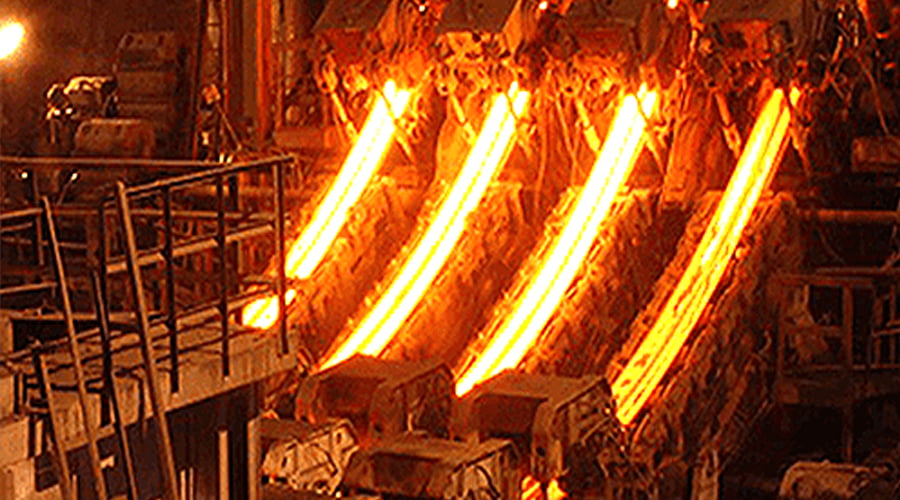Continuous caster are a key component of the steelmaking process, allowing efficient and continuous production of high-quality steel products. Continuous casting, also known as continuous steel casting, is the process of solidifying molten metal into “semi-finished” billets, blooms or slabs for subsequent rolling in finishing mills.
This advanced technology replaced the traditional method of casting ingots and revolutionized the industry. Understanding the basic parameters of a continuous caster is essential to optimize its performance and ensure the production of high-quality steel.
Basic Parameters Of Continuous Caster Machine
a). One of the basic parameters of the continuous casting machine is the casting speed.
This refers to the rate at which molten steel is cast into a solid state. Casting speed is determined by factors such as the type of steel being produced, the product size required, and the capabilities of the caster itself. Finding the right balance between casting speed and product quality is very important, as higher speeds may cause defects in the steel.
b). Another key parameter is mold vibration.
This involves the movement of the mold during casting, which helps achieve uniform solidification of the steel. By vibrating the mold, the steel is evenly distributed, resulting in a more consistent product. The frequency and amplitude of mold vibration can be adjusted according to steel grade and product specification.
c). The cooling of steel is also an important parameter in the continuous casting of continuous caster.
Heat must be extracted from the molten steel to solidify it into the desired shape. The cooling speed can be controlled by adjusting the flow and temperature of cooling water. Proper cooling is essential to prevent defects such as cracks or porosity from forming in the steel.
d). In addition, the degree of superheat of molten steel is an important parameter to be considered.
Superheat is the temperature difference between molten steel and its freezing point. Maintaining a proper level of superheat is critical to ensuring proper setting and avoiding problems such as clogging or cracking. Superheat is usually controlled by adjusting casting speed and cooling parameters.
e). Finally, the size of the caster itself plays a crucial role in determining the maximum size and weight of steel products that can be produced.
The caster must be designed to handle the required capacity, ensuring it can accommodate the steel flow and provide the necessary support during the casting process.
In conclusion, understanding the basic parameters of a continuous caster is essential to optimize its performance and ensure the production of high-quality steel.
Parameters such as casting speed, mold vibration, cooling, superheat and machine size all contribute to the overall efficiency and quality of the casting process.
By carefully controlling these parameters, steel manufacturers can achieve consistent, defect-free products and enhance their market competitiveness.

